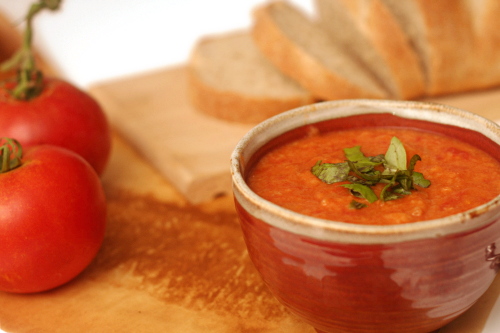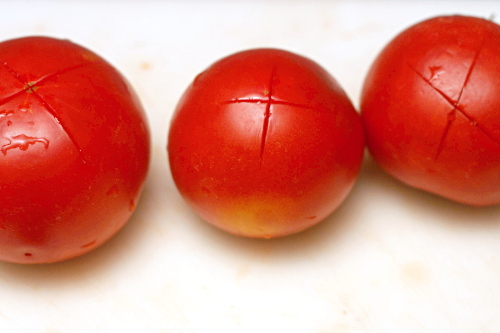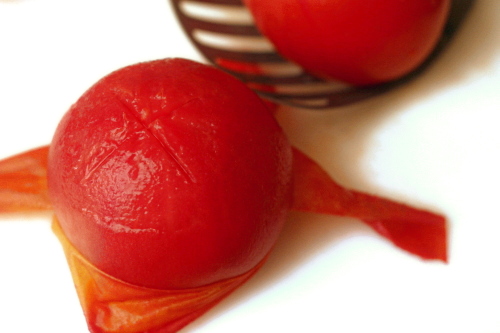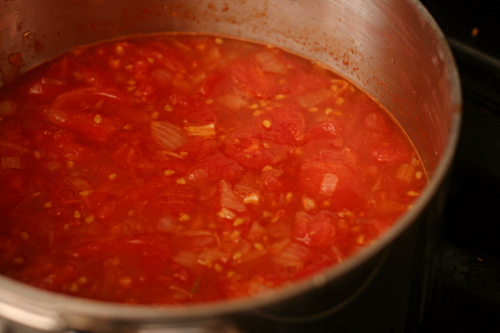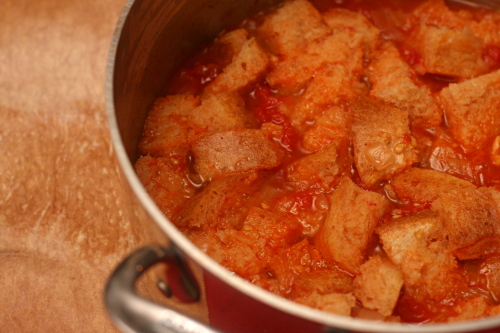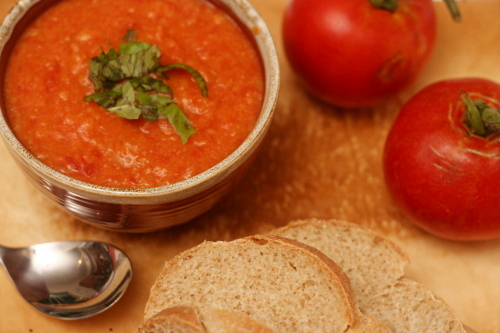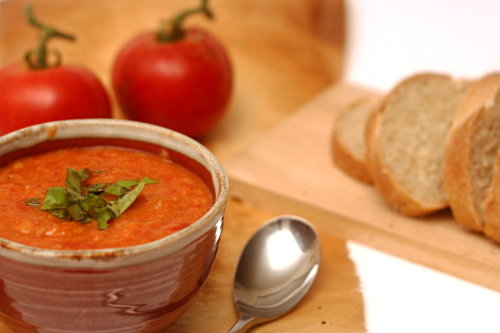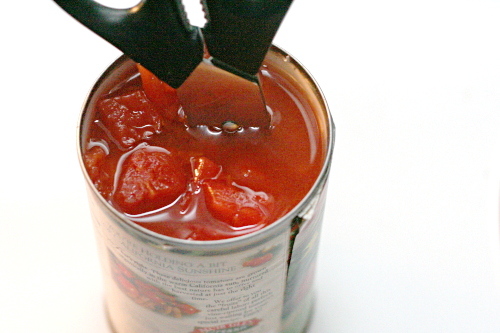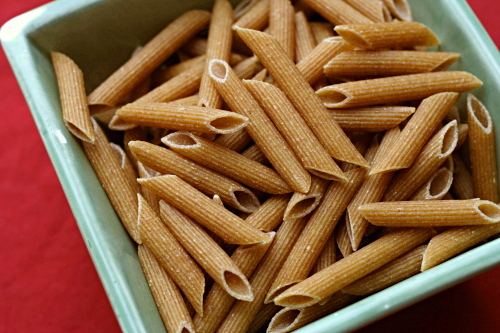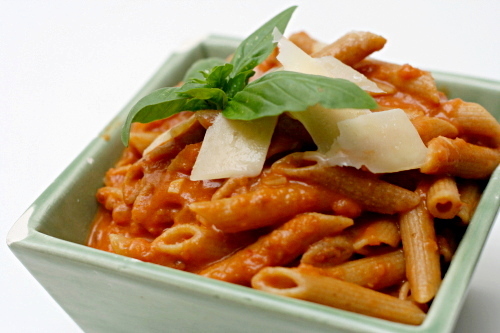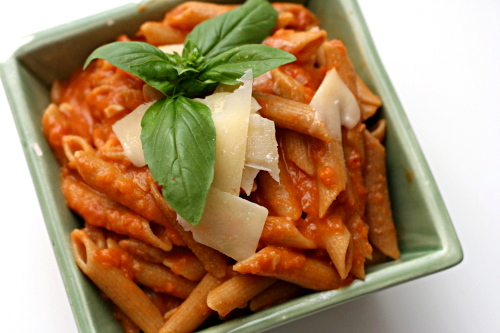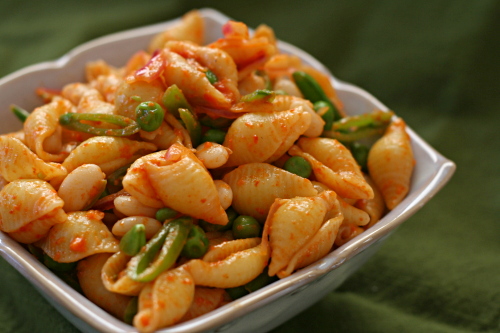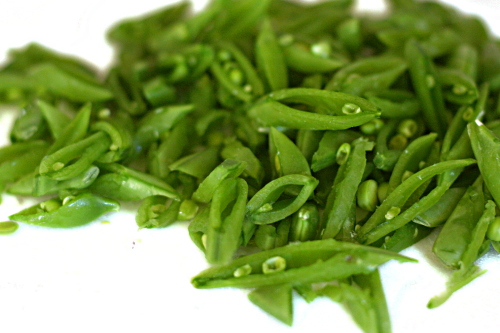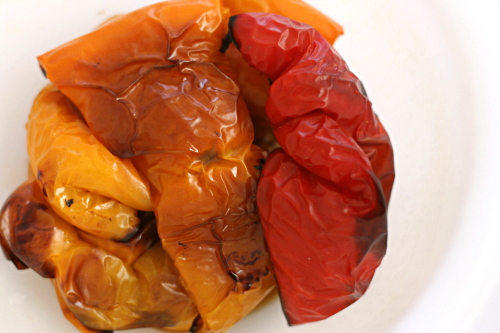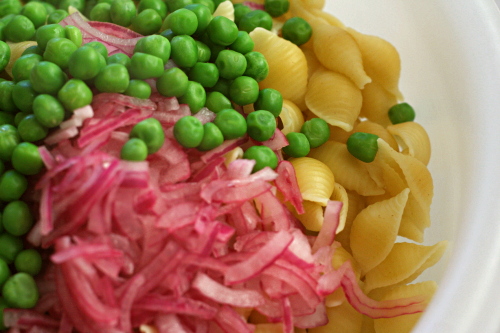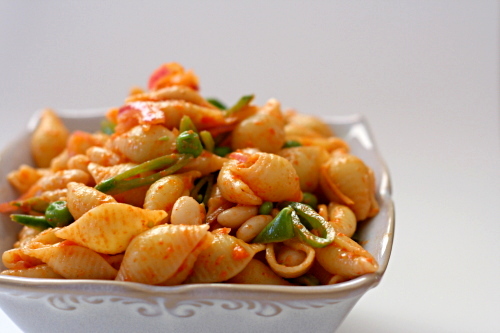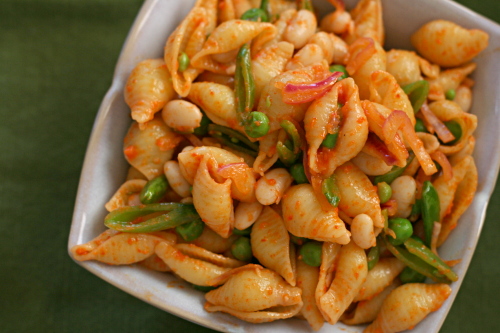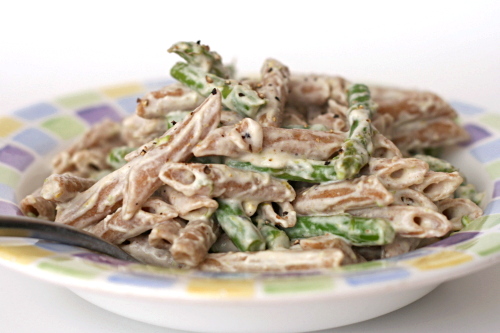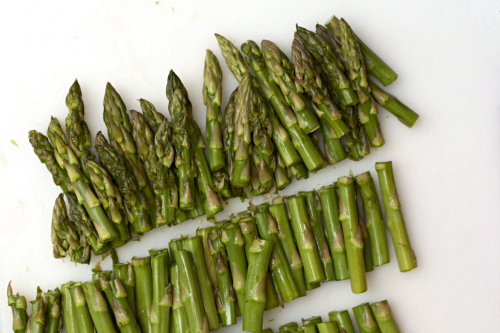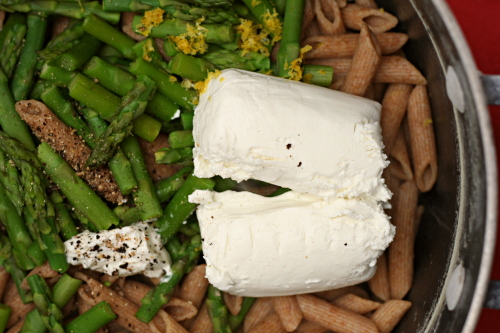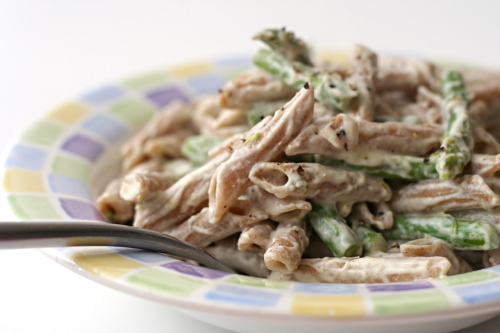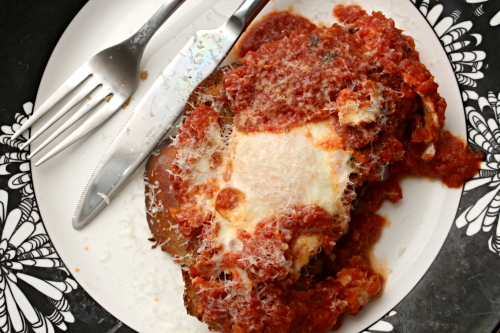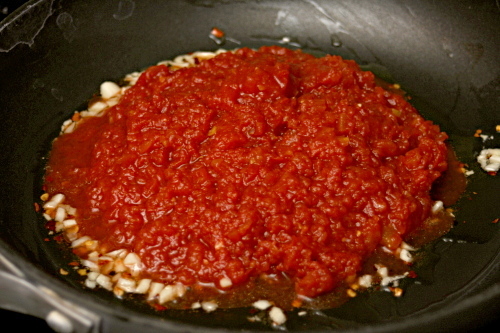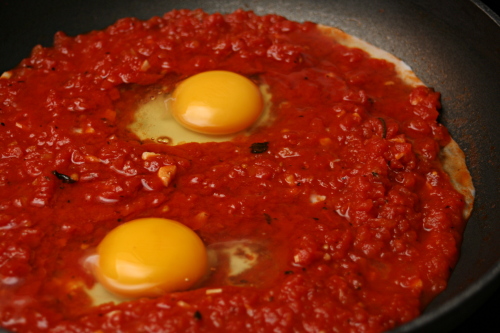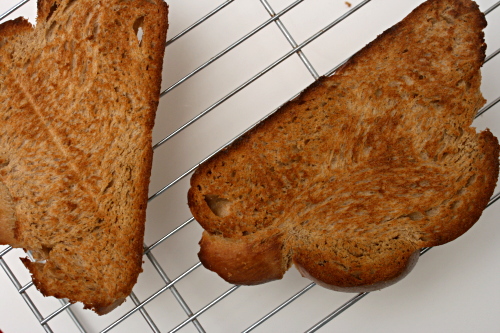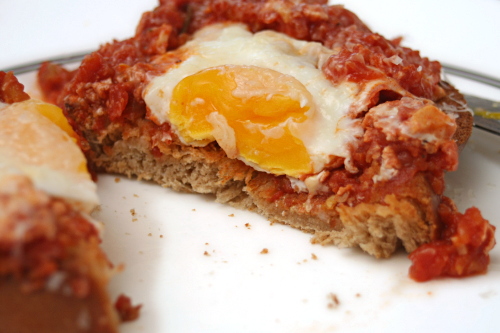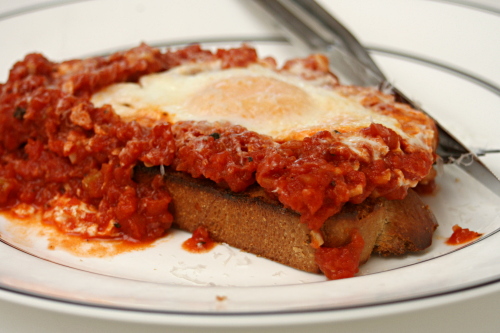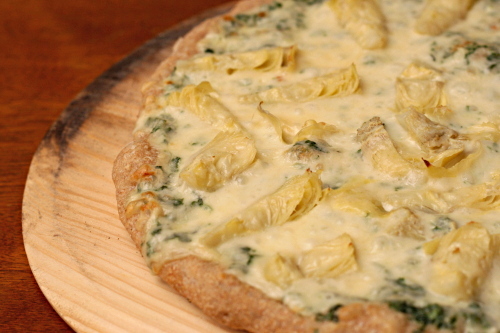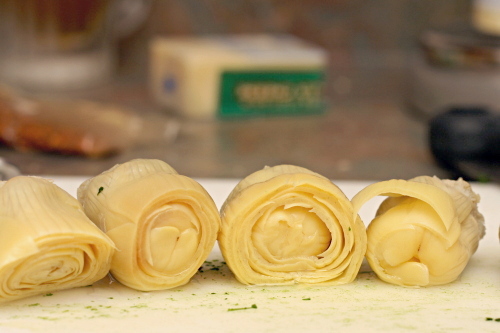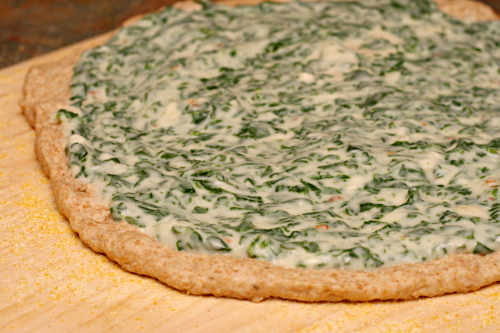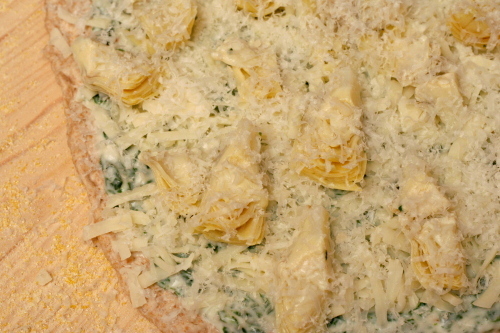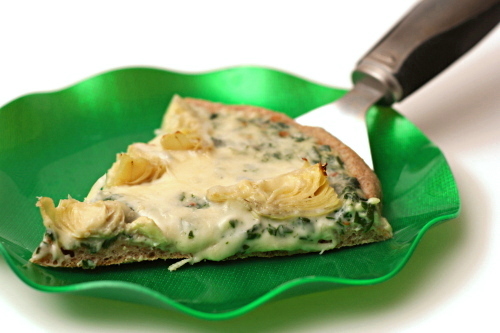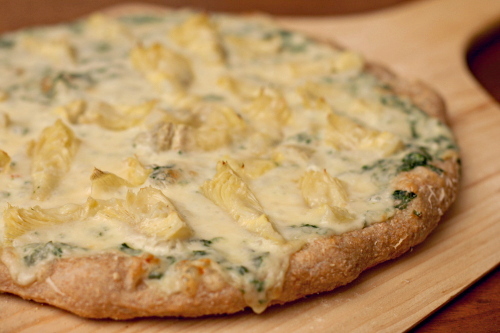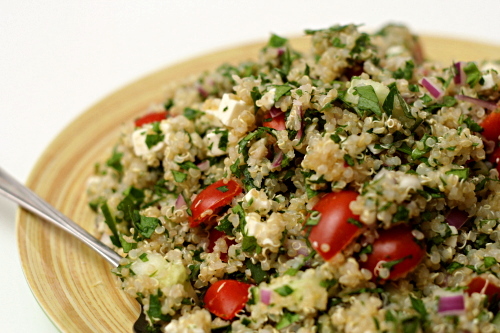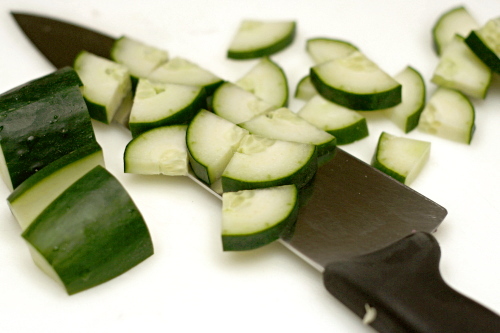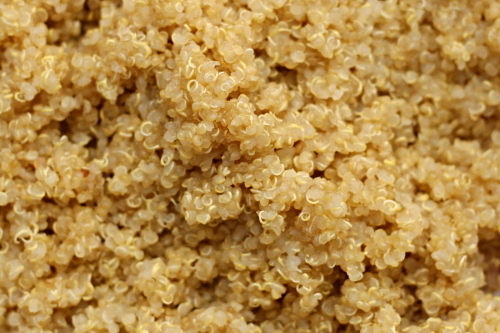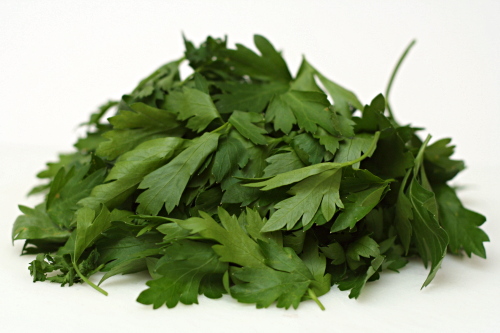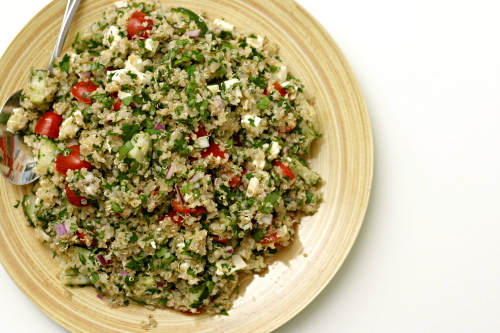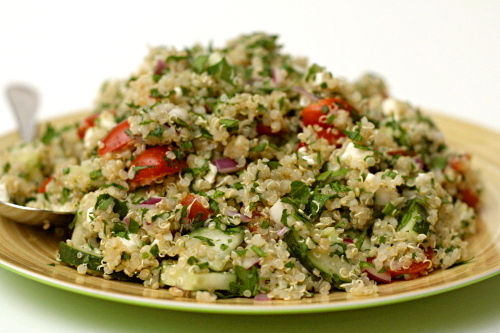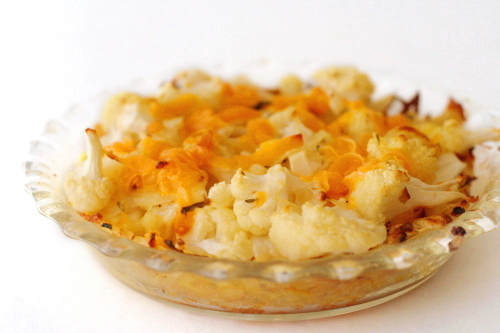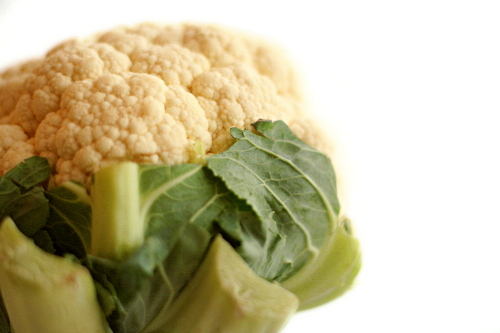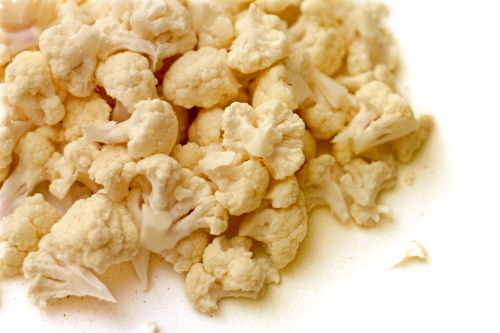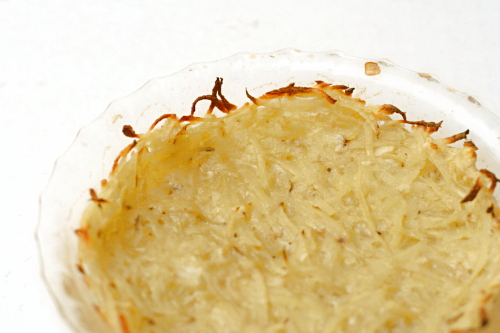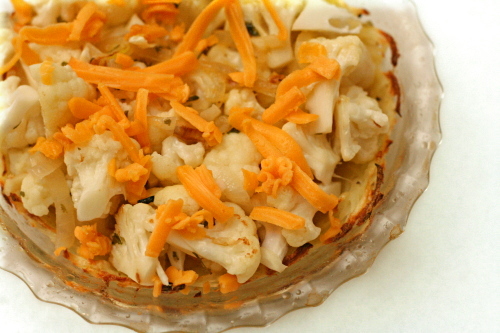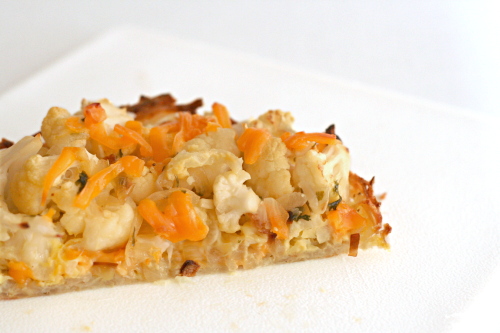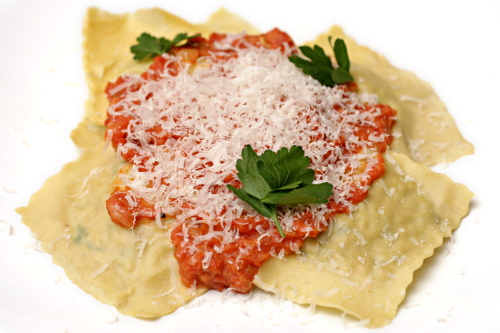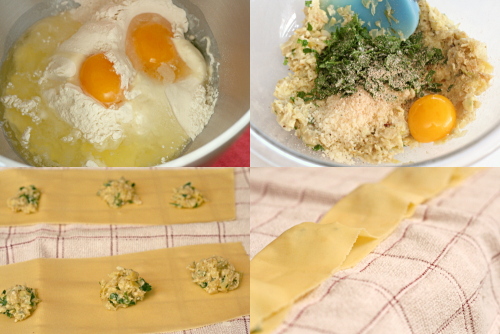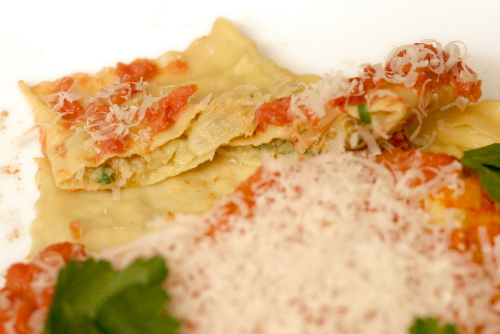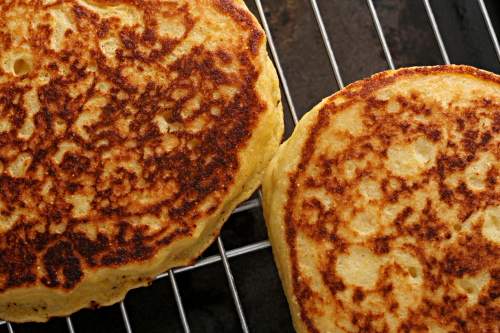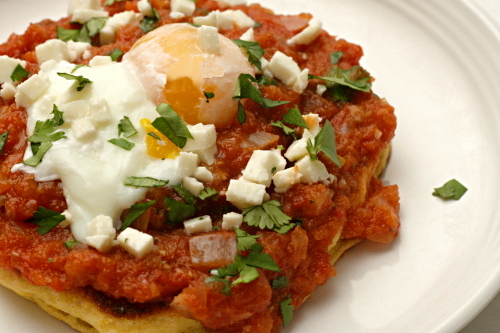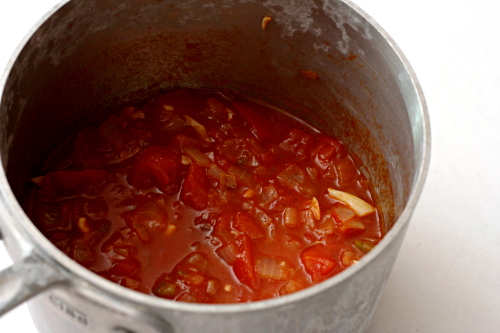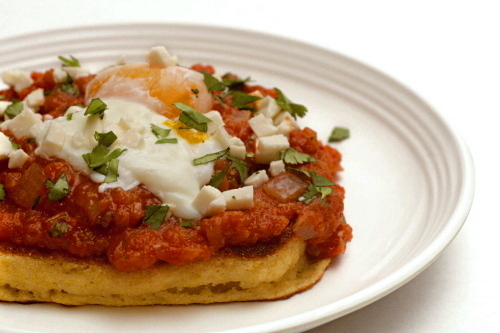My dad called Marlena de Blasi’s A Thousand Days in Venice “the most unrealistic true story [he’s] ever read.” He has a point – life-changing decisions based on love at first sight and all – but I still enjoyed Marlena’s attitude. It’s all about soaking up the good stuff, not sweating the small stuff, living life to the fullest – all of the things we know we should be doing, but too often let the rest of life get in the way.
(I can’t resist telling you that I used an excerpt from this book as a reading in our wedding. “As a couple there is some sense about us that feels like risk, like adventure, like the tight, sharp bubbles of a good champagne.” <romantic gushy sigh>)
She also has recipes in the book, all of which are about soaking up the good stuff, not sweating the small stuff, tasting food to the fullest. I’ve always remembered in particular the pappa al pomodoro, because it combines so many of my favorite things: fresh tomatoes, bread, tomato soup.
Well, I didn’t use her recipe. There are so many variations, and I’m sure they’re all traditional in one sense or another, so I chose the one that seemed the most fun for me. Because that’s what this is all about, right?
Pappa al pomodoro tastes equally of summer tomatoes and of good bread. Although I should stop calling it soup, because it isn’t. It’s porridge, thick and homey and comforting. When food tastes like this and is as much fun as this was to make, you can’t help but focus on what life is really about.
One year ago: Zucchini Bread
Two years ago: Shrimp, Roasted Tomato, and Farmers Cheese Pizza
Printer Friendly Recipe
Pappa al Pomodoro (adapted from The Zuni Cafe Cookbook via Orangette)
Serves 4-6
When my mom made this, she used a potato masher to break up the bread and tomatoes, which seems to me like the perfect way to get the mushy but not pureed texture of pappa al pomodoro.
2 pounds tomatoes
2 tablespoons olive oil
1 medium yellow onion, diced
salt
3 cloves garlic, chopped
1 (4-8 inch) sprig fresh basil, leaves removed and torn into pieces
3 cups broth (any kind) or water
pinch sugar
8 ounces stale (or dried in an oven) rustic bread, cut into 1-inch pieces
freshly ground black pepper
extra virgin olive oil for serving
1. Bring a medium saucepan of water to a boil over high heat. Meanwhile, score a small ‘X’ on the underside of each tomato, cutting just through the skin. Dip the tomatoes in the boiling water for 10-15 seconds, until the skin around the X starts to curl. Remove the tomatoes from the water. Peel the tomatoes by pulling the skin back from the X; core and roughly chop the tomatoes.
2. In a large pot, heat the olive oil over medium heat. Add the onions and a pinch of salt; cook, stirring occasionally, until the onions are soft and just starting to brown at the edges, about 8 minutes. Add the garlic and cook, stirring constantly, for about 30 seconds, then add the chopped tomatoes. Cook and stir until they start to release their liquid, 2-3 minutes, then add the basil stem (not the leaves), ½ teaspoon salt, and the broth. Taste and add a pinch of sugar if the soup seems too acidic. Bring to a simmer over medium-high heat, then lower the heat to maintain a slow simmer and cook for 10 minutes. Stir in the bread, turn off the heat, and let the mixture set for 15 minutes.
3. When ready to serve, either stir the soup to break up the bread chunks, or, if you’d like a smoother mixture, process it lightly with an immersion blender. Taste for seasoning, stir in the basil leaves, and top with freshly ground black pepper and extra virgin olive oil. Serve.
